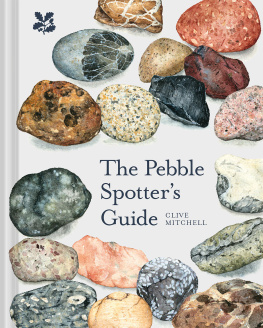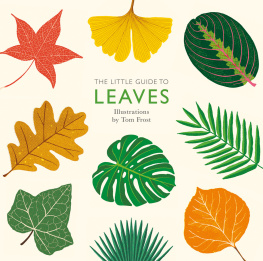Contents
Acknowledgements
Thank you to:
Lydia Good and all at Ebury Press.
Louise Morgan for the amazing illustrations.
Mark Ballard, Andrew Smith and all at Westonbirt Arboretum for helping to make this happen. Special thanks to Susanna Byers, Matt Parratt and of course Emily Beaumont, without whom this book wouldnt be what it is.
Mum and Dad for your love and support. Gran and Grandad for your love of trees. Sarika for being here and The Gang at The Palace for being there.
The trees at Westonbirt and beyond. You are a constant source of inspiration.
About the Book
From the experts at Westonbirt, the National Arboretum, and written by leading dendrologist Dan Crowley, this is the only guide you need to help you identify our most popular trees as you wander through the beautiful woodlands and gardens of Britain.
In this book you will find:
- Beautiful contemporary illustrations showing both the outline and foliage detail of Britains 100 best trees
- The origin of the species and where they can be seen today
- Authoritative bite-sized descriptions of each tree, and tips on how to identify them
About the Author
Westonbirt, The National Arboretum, is located in Gloucestershire, three miles from the Cotswold market town of Tetbury. The historic, Victorian picturesque landscape is managed by the Forestry Commission and supported by the Friends of Westonbirt Arboretum.
Within the 17 miles of accessible paths and five national collections, there are 15,000 labelled trees (around 2,500 different types of tree) from Britain, China, North America, Japan, Chile and other temperate climates.
Westonbirt attracts over 400,000 visitors per year and is known worldwide for its spectacular year round colour and magnificent displays.
In England, the Forestry Commission manage 1,500 woods and forests most of which are accessible to the public. www.forestry.gov.uk/visit
Monkey Puzzle
Araucaria araucana
Nothing else looks quite like a monkey puzzle tree. It has overlapping, spiny, rigid leaves on sweeping branches. The cones are round and disintegrate while on the tree. The swollen base of old trees is akin to an elephants lower leg. Lower limbs are lost with age and large trees are often features of small front gardens that they have rather outgrown.
Found in: parks, gardens
Origin: Chile

Monkey Puzzle
Yew
Taxus baccata
Common in churchyards, the yew is our oldest living tree. Some are reputed to be over 5,000 years old! It has short, thin, arching leaves neatly arranged along the shoot and will form a large rounded crown if not shaped or pruned as a hedge, as is commonly seen. Its berrylike fruit ripens red and this, excluding the seed within, is the only part of the tree that is not poisonous.
Found in: churchyards, woodland, parks
Origin: Europe, North Africa, Western Asia

Yew
Grand Fir
Abies grandis
The grand fir is one of the tallest-growing trees in Britain. The needlelike leaves are spread flat, sometimes drooping on either side of the shoot. Its small cones sit upright on branches high up in the tree.
The grand fir belongs to a group of trees known as true firs. The leaves of true firs are needlelike and when pulled off leave the shoot smooth.
Found in: forests, gardens
Origin: Western North America

Grand Fir
Noble Fir
Abies procera
The noble fir has distinctly blue foliage that is densely set along the upper side of the shoot. The cones can be very large and can be found on the upper branches of the tree.
As with all true firs, the cones sit upright on the branches and often disintegrate while on the tree. It is rare to find fallen fir cones fully intact.
Found in: forests, gardens
Origin: Western North America

Noble Fir
Douglas Fir
Pseudotsuga menziesii
This tree has needlelike leaves that are similar to those of the true firs. It is easily distinguished from these by its single, slender, brown terminal buds. The cones are often found in abundance beneath trees and have protruding three-pronged bracts that are instantly recognisable. Trunks are often large with deeply fissured bark.
Examples of this species are the tallest trees in the British Isles.
Found in: forests, parks, gardens
Origin: Western North America

Douglas Fir
Cedar
Cedrus
Cedars are often found taking pride of place aside mansion houses and in larger gardens. They come in various shapes, colours and sizes and can be very large. They can be weeping, blue or spreading, and can be rather upright when young. They have mini barrel-like cones and evergreen foliage in rosettes on side shoots and singularly around the stem on branch tips.
Found in: parks, gardens
Origin: North Africa, Asia

Cedar
Larch
Larix
Larches are one of five types of deciduous conifer. Before they shed their leaves in autumn they put on a fantastic display of yellow-gold colour. The needlelike leaves grow singularly around the shoot at branch tips and in rosettes on older wood, similar to those of the cedars. The cones are small and remain intact on the branches for some time but can also be found on the ground beneath.
Found in: forests, parks, gardens
Origin: Europe and Asia

Larch
Western Hemlock
Tsuga heterophylla
The western hemlock has short, narrow leaves of various length, which are scattered around the shoot. Some are upturned, revealing the whitish stripes that are found on the underside. Cones are small and hang from the tips of shoots and may also be found in abundance beneath the tree. Often used as a forestry tree, plantations are noticeably dark and are home to few other plants.
Found in: forests, parks, gardens
Origin: Western USA























